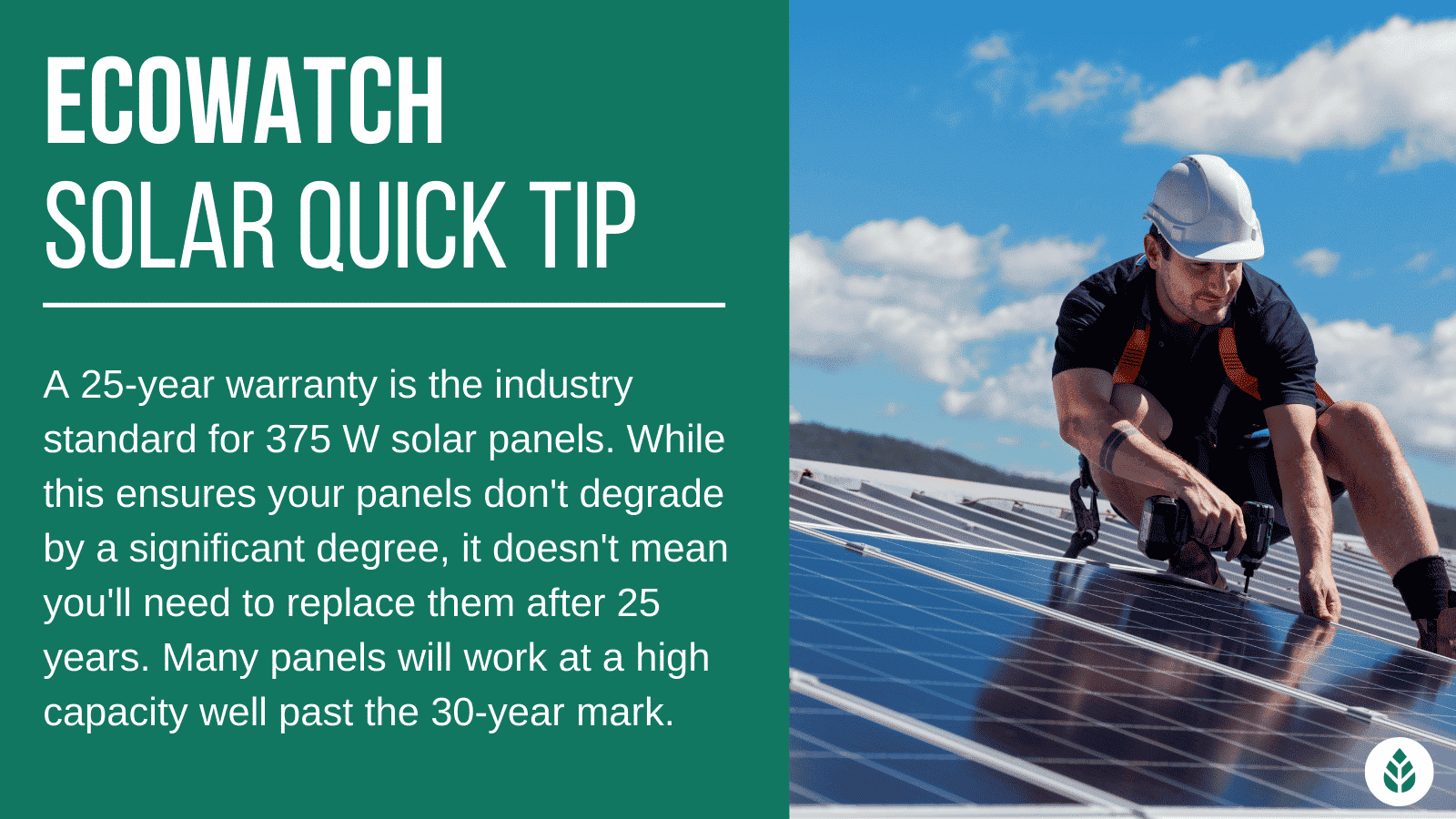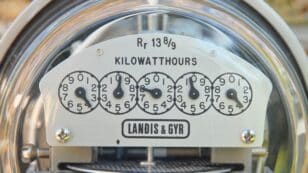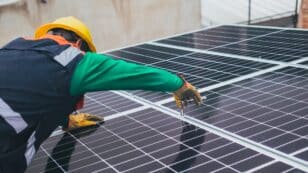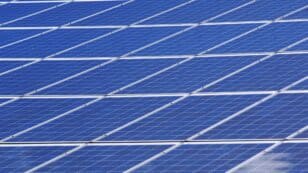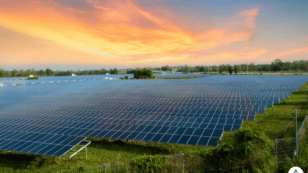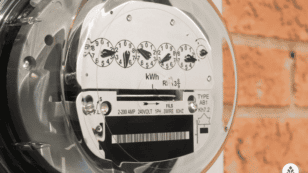

Best 375-Watt Solar Panels: Cost, Specs & Everything You Need to Know
Here’s what you’ll learn in this guide:
- The best 375-watt solar panels on the market
- What a 375-watt solar panel can power
- How much you might pay for this size of the panel
- 375-watt panel specs
Each product and or company featured here has been independently selected by the writer. You can learn more about our review methodology here. If you make a purchase using the links included, we may earn commission.
What Are the Best 375-Watt Solar Panels Available?
There are quite a few 375-watt solar panels available from major solar manufacturers as well as smaller companies that cater to DIY solar installers and those who want solar power systems for RVs, boats, and other small-scale off-grid solar projects. Below is a list of our top four solar panels in the 375-watt class:
- Best Overall: SunPower Maxeon P3-375
- Best Value: 375W High-Efficiency LG NeON R Solar Panels
- Outstanding Product Warranty: Mission Solar Energy Mono PERC 72 Solar Panels
- Most Affordable: JA Solar 375W PERC Polycrystalline Module

SunPower
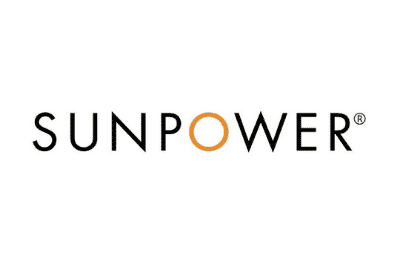
Nationwide Service
Average cost
Pros
- Most efficient panels on the market
- National coverage
- Cradle to Cradle sustainability certification
- Great warranty coverage
Cons
- Expensive
- Customer service varies by local dealer
SunPower designs and installs industry-leading residential solar and storage solutions across all 50 states. With a storied history of innovation dating back to 1985, no other company on this list can match SunPower’s experience and expertise.
SunPower earns its position as the top national installer on our list for a handful of reasons: It installs the most efficient solar technology on the residential market, offers the most expansive service area and backs its installations with a warranty well above the industry standard. All the while, SunPower pioneers sustainability efforts within the industry.
If that weren’t enough, SunPower systems come packaged with products all manufactured in-house by its sister company, Maxeon. This means that your panels, solar cells, inverters, battery and EV chargers are designed to work together and are all covered under the same warranty.
SunPower’s biggest downside? Its high-efficiency panels are considerably more expensive than most of its competitors’ products. However, its powerful panels are workhorses that make up for the initial cost with more backend production (think about this like spending more money for a car that gets more miles per gallon).
Facts and Figures: SunPower
| EcoWatch Rating |
|---|
| Better Business Bureau (BBB) Rating |
| Year Founded |
| Average Cost ($-$$$$$) |
| Solar Services |
| Brands of Solar Equipment Offered |
| Warranty Coverage |
| 5 |
| A+ |
| 1985 |
| $$$$ |
| Solar Panels, Solar Batteries, EV Chargers, System Monitoring |
| SunPower Panels |
| 25-year all-inclusive warranty |

Blue Raven Solar
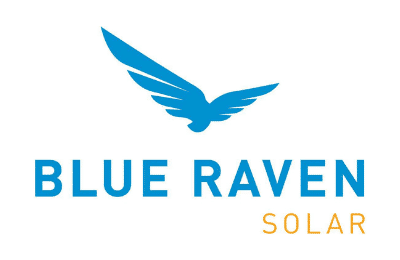
Regional Service
Average cost
Pros
- Industry-leading in-house financing
- Competitive pricing
- Excellent reputation
Cons
- Doesn't offer solar batteries (coming 2022)
We like Blue Raven Solar because it understands that, for most homeowners, the cost of solar presents the biggest barrier to entry.
For that reason, Blue Raven Solar developed an innovative solar financing plan that offers in-house, flexible, zero-money-down options. The results speak for themselves, as Blue Raven Solar is now one of the fastest-growing solar companies in the nation and was recently acquired by SunPower. Its BluePower Plus+ plan (exclusive to Blue Raven) mimics the flexible structure of a lease while still providing the greatest benefits of owning your system.
Eligible homeowners enjoy 18 months of solar power before having to pay their first bill. When coupled with the federal solar investment tax credit (ITC), the initial energy savings can offset more than a third of the overall cost of a system before requiring a dollar down.
In contrast, other installers can only offer similar financing through solar leases, PPAs or third-party providers (such as Mosaic or Sunlight). Third-party loan providers can complicate the process, while opting for a loan or PPA will disqualify you from some of solar’s biggest benefits (additional property value, federal solar tax credit and local solar incentives).
Facts and Figures: Blue Raven Solar
| EcoWatch Rating |
|---|
| Better Business Bureau (BBB) Rating |
| Year Founded |
| Average Cost ($-$$$$$) |
| Solar Services |
| Brands of Solar Equipment Offered |
| Warranty Coverage |
| 4.5 |
| A+ |
| 2014 |
| $$ |
| Solar Panels, System Monitoring |
| Trina Solar, Canadian Solar, SolarEdge, Silfab, SunPower |
| 25-year manufacturer warranty; 10-year workmanship warranty, 2-year production guarantee |
375-Watt Solar Panel Pricing
Most homeowners that are installing solar will be concerned with the cost of panels, especially since the price of a full solar power system can reach the tens of thousands of dollars. Smaller panels — usually in the 300-watt range — are more often geared toward DIY solar installers and for smaller applications, so they’re priced per panel, and the cost is easy to determine. Some larger panels — including some in the 375-watt range — they’re only available through solar installation companies.
The table below includes pricing for our top panel options where available. Keep in mind that these prices are for single panels only, and they don’t reflect the total amount you’ll pay for your solar power system.
| Solar Panel | Price (Per Panel) |
| SunPower Maxeon P3-375 Monocrystalline Panels | Varies by installer |
| 375W High-Efficiency LG NeON R Solar Mono Solar Panels | $615.00 |
| Mission Solar Energy PERC 72 Solar Panels (MSE375SQ9S) | $453.99 |
| JA Solar 375W PERC Module | Varies by installer |
375-Watt Solar Panel Warranties
Solar systems can quickly get expensive, and for many homeowners, shopping for panels without the peace of mind afforded by a solar panel warranty is out of the question. Most solar companies include lengthy warranties for their panels that can cover the equipment, installation or workmanship (where applicable), or power production. Some of the best solar panel warranties — like the one included with SunPower panels — include coverage for all three.
When you get into the 375-watt range for panels, warranty coverage will generally be lengthy and comprehensive. We’ll include the warranties available for our top four-panel picks in the table below.
| Solar Panel | Warranty Coverage |
| SunPower Maxeon P3-375 | 25-year warranty for equipment and labor, plus a 25-year progressive warranty for power production (minimum of 85.5% after 25 years — potential induced degradation (PID) resistance) |
| 375W High-Efficiency LG NeON R Solar Panels | 25-year limited warranty plus 25-year production warranty guaranteeing a minimum of 90.6% efficiency — PID resistance |
| Mission Solar Energy (MSE) PERC 72 Solar Panels | 12-year warranty for equipment, or up to 25 years with an extended warranty |
| JA Solar 375W PERC Module | 12-year warranty for equipment plus a 25-year progressive warranty for power production (minimum of 82% after 25 years — PID resistance) |
Panel Specifications: How Big Is a 375-Watt Solar Panel?
The physical size of a solar panel with an STC (Standard Test Conditions) rating of 375 watts can vary quite a lot depending on the manufacturer and the number and size of the solar cells included in the panel. The average size is 39” by 77” at around 1.5” thick. Panels of this size can be around 50 pounds or more, which is significantly heavier than 300-watt panels made for DIY applications. Maneuvering these panels, especially on the roof of your home or RV, can be challenging and dangerous.
The table below includes size specifications and per-panel weights for our top four 375-watt solar panels.
| Solar Panel | Product Dimensions (Per Panel) | Panel Weight (Per Panel) |
| SunPower Maxeon P3-375 | 45.67” by 66.54” at 1.38” thick | 42.11 lbs |
| 375W High-Efficiency LG NeON R Solar Panels | 40” by 66.93” at 1.57” thick | 38.58 lbs |
| Mission Solar Energy PERC 72 Solar Panels | 38.69” by 78.7” at 1.57” thick | 47.6 lbs |
| JA Solar 375W PERC Module | 39.02” by 77.17” at 1.57” thick | 48.5 lbs |
How Much Energy Will a 375-Watt Solar Panel Produce?
Most people installing solar or having solar panels installed by a professional understandably want to know how much energy each panel will produce. Unfortunately, there are a lot of variables to consider, so there’s no guaranteed production rate, even among solar panels like 375W solar panels that are the same size.
You can control some of the things that affect how well your panels perform, including:
- The direction your panels are facing: Many professionals and those doing a DIY solar installation will use brackets or mounts to angle the panels toward the path of the sun.
- Shading from trees or buildings: Of course, it’s not ideal to cut down trees to give your solar panels more access to the sun, but you can sometimes position them so that shading from surrounding trees or nearby buildings is minimal.
- The brand of the panel you choose: Selecting a high-quality brand that is rated for high efficiency will tend to provide a higher energy output, especially as the panel ages and naturally loses some efficiency.
There are also some factors that are out of your control, including:
- The climate in your area: Homeowners who experience more cloudy days, rain, snow, and other inclement weather times will naturally find that solar production is lower than in areas with abundant sunlight.
- Solar irradiance: Solar irradiance, which we’ll explain in greater depth below, refers to the intensity of the sun in your area. Homeowners who live in southern states like Arizona and Texas that receive direct and intense sunlight will have higher solar production levels than people in northern states, where the sun is less intense.
- Hours of daylight per day: Your solar panels only produce power when the sun is shining, which means areas that experience longer stretches of daylight each day will see a higher production, even if all other factors are equal
Despite the many factors that can affect your solar production, you can use the equation below to estimate how much energy a single 375-watt solar panel will produce for your home:
- (average hours of sunlight) x (solar panel wattage) x (75% maximum power production to account for changing weather conditions and lower sun intensity in the morning and afternoon) = your daily watt-hours
- (your daily watt-hours) / 1,000 = your daily kilowatt-hours (kWh) per panel
How Many kWh Does a 375-Watt Solar Panel Produce?
Using the equation above, we can calculate how much power your panels will produce, and this gives us a decent estimate of what you’ll experience in reality. We need to know the hours of daylight you get each day, which we’ll assume is eight for purposes of demonstration:
(8 hours of sunlight) x (375 watts) x (75%) = 2,250 watts per day
(2,250 watts per day) / 1,000 = 2.25 kWh per day
As you can see, a single 375-watt panel in an area that receives eight hours of sunlight every day should produce around 2.25 kWh every day, which means your annual production per panel would be around 821.25 kWh. Again, this is just a rough estimate, and your actual production could vary quite a bit. However, this calculation is often a great place to start to determine how many panels you need for your solar project.
How Does Solar Irradiance Impact Power Output?
Solar irradiance is a very important factor to consider — it has a significant impact on the energy production you’ll see from your solar panels. Solar irradiance refers to the intensity of the sun in your area. The closer you live to the equator, the closer you are to where the sunlight hits the earth in a perpendicular fashion. As you move further from the equator, the sunlight comes in at more and more of an angle, leading to lower solar irradiance.
Solar modules will provide the highest levels of energy generation — and possibly even a positive power tolerance over their rating — where the sunlight is most direct. Solar irradiance is a crucial factor to consider when determining how many panels you need for your project, as it determines how much energy you’ll produce with each panel and thus how many panels you need to power your home, RV, boat, or other solar projects.
Here’s a look into solar irradiance:
Is Panel Voltage Important?
Panel voltage is another important factor on your solar panels’ datasheet, and it’s one that’s often overlooked by DIY solar installers. Voltage is easiest to think of in terms of liquids, so if you imagine a water tank with a pipe leading out of the bottom, you can conceptualize voltage easily. The more water you place in the tank (higher voltage), the more rapidly the water will empty out of the pipe at the bottom (higher amps). Similarly, the higher the system voltage of your solar panels, the more readily it will send power to solar batteries or devices for use through a charge controller. Items that have a high-rated voltage (voltage at the maximum power point or Vmp) will need panels with an even higher voltage to deliver power to them.
Panel voltage is important because you need to know what your panels can power. For example, you can have a few solar panels that provide enough watts to power an electric stove. However, most stoves require a voltage of around 240 volts. You’d need panels that deliver more than 240 volts in order for the energy to flow from the panels to the stove. Open circuit voltage (VOC) and short circuit current (ISC) are crucial things to consider because they determine which batteries you can charge and which items in your home or RV you can power with solar.
What Can a 375-Watt Solar Panel Run?
A single 375-watt solar panel can run a lot of the smaller electronics in your home, and you can check the rating from the International Electrotechnical Commission (IEC) to see the wattage required for your devices. The table below provides a list of some of the common things you can power with a 375W panel, along with the rated watts (the watts required to run) of each.
| Appliance/Household Item | Running or Rated Watts Required to Run |
| Phone Charger | 10 watts |
| CFL Light Bulb | 18 watts |
| Ceiling Fan | 60 watts |
| Standard 60W Incandescent Light Bulb | 60 watts |
| DVD Player | 100 watts |
| Mini-Fridge | 100 watts |
| Home Speaker System | 100 watts |
| Box Fan or Floor Fan | 100 watts |
| Hair Straightener | 120 watts |
| Laptop Charger | 125 watts |
| Electric Can Opener | 170 watts |
| Gaming Console | 180 watts |
| Vacuum Cleaner | 200 watts |
| Rice Cooker | 200 watts |
| Heated Blanket | 200 watts |
| Up to 56” LCD TV | 225 watts |
| Paper Shredder | 225 watts |
| TV | 230 watts |
| PC (Non-Gaming) | 240 watts |
| Small Dehumidifier | 250 watts |
| Computer Monitor | 250 watts |
| Crockpot | 250 watts |
| Projector | 280 watts |
| Whole-House Exhaust Fan | 350 watts |
| Blender | 360 watts |
| Central AC Fan Only | 370 watts |
What Factors Influence Solar Panel Power Output?
In most cases, it’s best to overestimate how much power you’ll need and underestimate how much power your solar panels will produce, as this will give you an array that is sufficient for your purposes regardless of weather and other power-limiting factors. There are quite a few things that can affect your solar production.
One of the most important things to consider is the shading on your panels. If you have trees or buildings near your home that will cast a shadow on your panels for any portion of the day, your energy generation will be limited. Long periods of shade can decimate your production and might even make your solar panels a poor investment. Similarly, the climate in your area will affect your production, as locations with the abundant sun will almost always have higher production, as will areas with warmer weather since solar panels lose efficiency as the temperature drops according to their temperature coefficients.
The number of daylight hours you experience will also affect your solar energy output. Areas with longer days in general — like those near the equator — will have a greater opportunity for solar production and will generate far more power. Areas with a higher level of solar irradiance — more intense sunlight — will also have a higher rate of power generation. Finally, the brand of solar panel you choose and the PV module efficiency can have an impact on your rate of production.
How Many 375-Watt Solar Panels Do I Need?
Your first step in determining how many solar panels you need is figuring out how much power you need at your installation site. If you need to know how many panels you need to power a house, for example, you can check your past electric bills for your average annual usage and use that to determine what combination of panels can supply that amount of power.
For example, if you use our calculation from before and assume that each 375-watt panel will produce around 2.25 kWh per day, and you assume that you consume the average amount of energy — 10,715 kWH, according to the Energy Information Agency — you would need 13.04 375-watt panels (or 14, as it’s always best to round up).2 If you’re installing panels on your residence, the best panels for homes are those that have a higher output potential. These can minimize the strain on your roof, and they are often put in series with connectors that route power through a busbar to an inverter for use in your home.
Comparing authorized solar partners
-
- Most efficient panels on the market
- National coverage
- Cradle to Cradle sustainability certification
- Great warranty coverage
- Expensive
- Customer service varies by local dealer
A+Best National Provider1985SunPower Panels25-year all-inclusive warranty
Having trouble deciding? Click below and use our process to receive multiple quotes instead:

 233k
233k  41k
41k  Subscribe
Subscribe 
